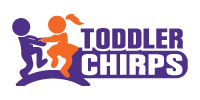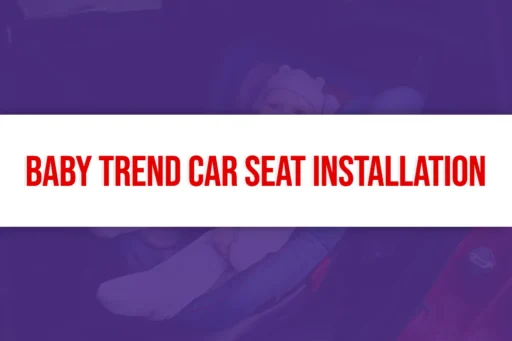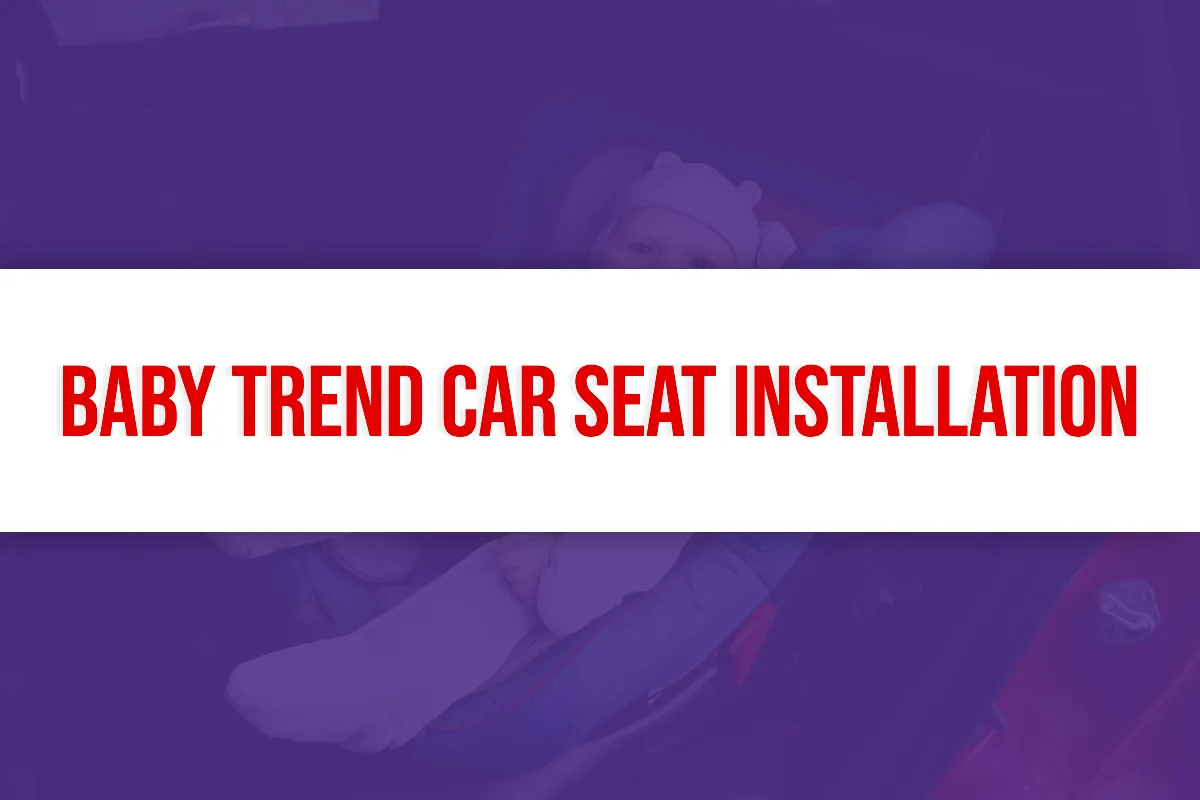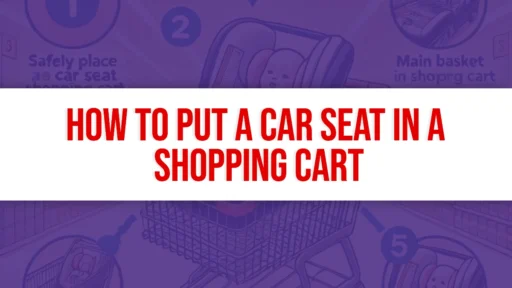Installing a Baby Trend car seat can feel overwhelming. Safety is a top priority for parents.
A properly installed car seat is crucial for your child’s safety. Many parents struggle with the installation process, often feeling unsure if they’ve done it correctly. This guide aims to ease those worries. We’ll walk you through the steps to ensure your Baby Trend car seat is secure and safe.
By following these instructions, you can gain confidence and peace of mind. Let’s make your child’s car rides safer and more comfortable.
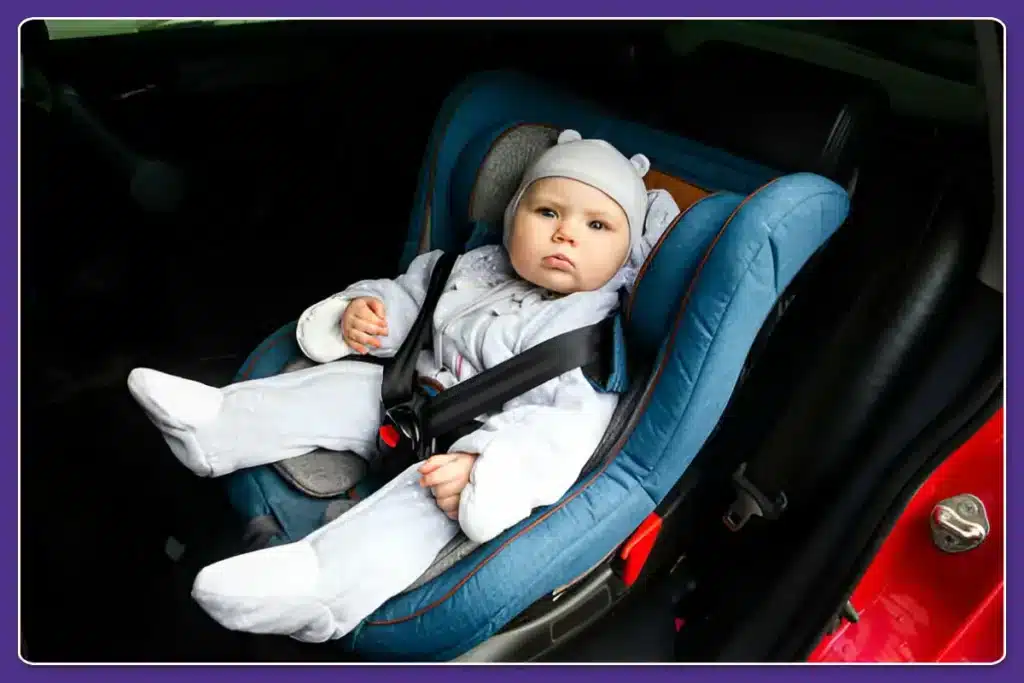
Introduction To Baby Trend Car Seat
Baby Trend Car Seats are known for their reliability and ease of use. They are designed to keep your child safe and comfortable during travel. Installing a car seat might seem daunting, but with Baby Trend, it becomes a breeze. This guide will help you understand why Baby Trend is a top choice for many parents.
Why Choose Baby Trend?
Baby Trend offers a variety of car seats that cater to different needs. Their products are affordable and durable. Plus, they have received high ratings from users. Let’s look at some reasons why you might prefer Baby Trend:
- Affordability: Baby Trend car seats are budget-friendly without compromising on quality.
- Durability: These car seats are built to last, ensuring long-term use.
- Ease of Use: Installation and adjustments are straightforward, even for first-time parents.
Safety Features
Safety is the top priority for Baby Trend car seats. They come with several features that protect your child:
- Side Impact Protection: Provides extra cushioning and support in case of a collision.
- 5-Point Harness System: Ensures your child is securely strapped in at all times.
- Latch System: Makes installation simple and secure, reducing the risk of improper installation.
Baby Trend car seats are tested rigorously to meet safety standards. You can trust that your child is in good hands.
Preparing For Installation
Getting ready for the installation of your Baby Trend Car Seat is crucial. Proper preparation ensures safety for your child. Follow these steps to make the process easier and more effective.
Read The Manual
Read the manual thoroughly before starting. The manual provides specific instructions for your car seat model. Look for safety tips and warnings. This step is vital for the correct installation.
- Locate the manual in the car seat box.
- Understand the instructions and diagrams.
- Note the important safety guidelines.
Gather Necessary Tools
Having the right tools at hand can save time. Here’s what you need:
| Tool | Purpose |
|---|---|
| Seat Belt Locking Clip | Secure the seat belt |
| Level Indicator | Ensure correct angle |
| Towel or Pool Noodle | Adjust seat angle |
Gather these tools before starting the installation. This will make the process smoother and more efficient.
Choosing The Right Car Seat Position
Installing a Baby Trend car seat correctly is crucial for your child’s safety. The position you choose can impact how well the seat protects your child during travel. Understanding the different options will help you make the best choice for your family.
Rear-facing Vs. Forward-facing
Rear-facing car seats are the safest for infants and toddlers. They support the head, neck, and spine in a crash. The American Academy of Pediatrics recommends keeping children rear-facing until at least age two.
Forward-facing car seats are suitable for older children. They offer harnesses that hold your child securely. It’s best to switch to a forward-facing seat only after they outgrow the rear-facing one.
Middle Seat Vs. Side Seat
The middle seat is the safest spot in the car. It’s the farthest from any point of impact. This seat provides the best protection in a side collision. Most cars support car seats in the middle.
The side seat is also a common choice. It can be easier to install and access. If you have multiple car seats, you may need to use the side seats. Always check your vehicle’s manual for proper installation guidelines.
| Aspect | Rear-Facing | Forward-Facing |
|---|---|---|
| Age Group | Infants and Toddlers | Older Children |
| Safety | Best for head, neck, spine | Secure with harness |
| Aspect | Middle Seat | Side Seat |
|---|---|---|
| Position | Farthest from impact | Common choice |
| Installation | Check vehicle manual | Check vehicle manual |
Installing With Latch System
Installing a Baby Trend car seat with the LATCH system ensures safety. This method is straightforward and secure. Follow these steps to install the seat correctly.
Locate Latch Anchors
First, find the LATCH anchors in your car. They are usually in the seat creases. Feel around with your hand. You will find two metal bars.
Attach And Tighten
Next, attach the car seat’s lower connectors to the LATCH anchors. Push them until you hear a click. Now, pull the straps to tighten. Ensure there is no slack.
Finally, press down on the car seat. This helps remove any extra slack. Check that the seat does not move more than an inch. Your car seat is now securely installed.
Installing With Seat Belt
Installing a Baby Trend car seat with a seat belt ensures safety. It’s an important skill for any parent or caregiver. This guide will walk you through the process step by step.
Threading The Seat Belt
First, place the car seat in the back seat of your vehicle. Ensure it faces the correct direction. Look for the belt path on the car seat. It is usually marked. Thread the seat belt through this path. Make sure it lies flat and is not twisted. Pull the seat belt all the way out.
Locking The Seat Belt
Next, slowly let the seat belt retract. You will hear a clicking sound. This indicates the seat belt is locking. Push down on the car seat with your weight. Tighten the seat belt as much as possible. Check for any slack. The car seat should not move more than an inch side to side or front to back.
Adjusting The Harness
Installing a Baby Trend car seat correctly is crucial for your child’s safety. One key aspect is adjusting the harness. This ensures your baby is secure and comfortable during every ride. Let’s explore the steps to adjust the harness properly.
Proper Harness Height
Choosing the right harness height is essential for your baby’s safety. Follow these steps:
- Identify the slots: Check the car seat for harness slots. They should align with your baby’s shoulders.
- Adjust the height: For rear-facing, the harness should be at or below the shoulders. For forward-facing, it should be at or above.
- Ensure snug fit: There should be no slack. A snug harness keeps your baby safe.
Securing The Buckle
After adjusting the harness height, secure the buckle properly. Here’s how:
- Position the buckle: The buckle should be at your baby’s hip level. This prevents discomfort and ensures safety.
- Click to secure: Insert the harness straps into the buckle. You should hear a click. This sound means it’s locked.
- Check tightness: Try to pinch the straps. If you can pinch, it’s too loose. Tighten it until you can’t pinch any material.
Adjusting the harness correctly can save lives. Make it a priority each time you use the car seat. Remember, your child’s safety depends on it.
Final Safety Checks
Ensuring your Baby Trend car seat is installed correctly is crucial for your child’s safety. After installation, it’s important to perform final safety checks. These checks confirm that the seat is secure and positioned properly. Here are the key steps to follow:
Check For Movement
Once the car seat is installed, push down on the seat firmly. Try to move it side-to-side and front-to-back. The seat should not move more than an inch in any direction. If it does, you need to tighten the seat belt or LATCH system. A tight fit is essential for keeping your child safe in the event of a collision.
Ensure Correct Recline Angle
Check the recline angle of the car seat. Many car seats have a built-in angle indicator. This indicator helps you ensure the seat is reclined correctly. If the seat is too upright, your baby’s head may fall forward. If it’s too reclined, the seat may not protect well in a crash.
| Step | Action |
|---|---|
| 1 | Check angle indicator |
| 2 | Adjust base if needed |
| 3 | Ensure seat is level |
Follow the steps in the table to ensure the correct recline angle. Adjust the base if needed. Make sure the seat is level. This ensures your baby is safe and comfortable.
Tips For Ongoing Safety
Ensuring your Baby Trend Car Seat remains safe is a continuous process. Regular inspections and maintenance are key. Keeping the car seat clean and in good condition can also enhance its safety. Follow these tips to keep your child safe.
Regular Inspections
Inspect the car seat every week. Check the harness for wear and tear. Look for any cracks or damage on the seat. Verify that the seat is securely installed. Make sure it does not move more than an inch. Examine the buckles and straps for functionality. Test the recline angle to ensure it’s correct.
Cleaning And Maintenance
Clean the car seat regularly. Use mild soap and water for the fabric. Avoid using bleach or harsh chemicals. Remove the cover and wash it according to the instructions. Clean the plastic parts with a damp cloth. Dry them thoroughly before reassembling. Inspect the seat for any loose parts after cleaning.
| Task | Frequency |
|---|---|
| Inspect harness and buckles | Weekly |
| Check for cracks or damage | Weekly |
| Clean fabric and plastic parts | Monthly |
| Wash cover | As needed |
- Inspect weekly: Check harness, buckles, and seat for damage.
- Clean regularly: Use mild soap for fabric and damp cloth for plastic.
- Follow instructions: Wash cover as per manufacturer guidelines.
Frequently Asked Questions
Installing a Baby Trend car seat involves securing it with either the LATCH system or the seatbelt. Always follow the manufacturer’s instructions for proper installation.
Yes, you can install a Baby Trend car seat without the base. Use the vehicle’s seatbelt to secure the car seat.
The LATCH system (Lower Anchors and Tethers for Children) helps secure the car seat in your vehicle. It provides an alternative to seatbelt installation.
To adjust the Baby Trend car seat straps, loosen the harness and re-thread the straps to the correct height. Ensure they are snug.
Conclusion
Ensuring proper installation of your Baby Trend car seat is crucial. Safety comes first. Follow the steps closely for a secure fit. Double-check all connections. Test the seat’s stability. Make adjustments if needed. A well-installed car seat protects your child.
Always refer to the manual for guidance. Regularly inspect the seat for wear and tear. Keep your baby safe on every journey. Happy travels!
